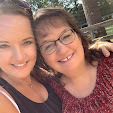Beekeeping is a grand adventure that I just started on this January! I was asked to help a ministry start beekeeping and told the director, "Sure--I can learn!" And so a mad race began that has led to this moment--the arrival of 20,000 bees this Friday morning!
It's pretty much too late to start for this year as your new hive needs the whole summer to prepare for it's first winter. Most apiaries don't sell bees except in the early spring. In fact, you have to pre-order to get your batch reserved in January! I managed to grab a last couple of packages in February when NLWC decided I could 'go ahead' and start.
These are the steps I've taken so far:
 |
| Montgomery County Beekeepers Club |
1. First and most important--join a beekeeping club!
The fact is that you really do need to be 'mentored' and taught. This is a community project and you need all the advice and encouragement and teaching you can get. Many folks join the local bee keeping club a year before they start so they can learn as much as possible before starting. You spend a lot of money on beekeeping supplies and bees, so you don't want to start out wrong. |
| My neighbors helped me install the women's center bees last week. |
 |
| Texas Beekeepers Association Summer Clinic |
Also the beekeeping clubs are basically support clubs--sharing advice, training, and even honey extraction equipment! Through them I also learned about the Texas Beekeepers Association and am attending their state convention this summer which happens to be local this year.
2. Research! Get a few books, a hot latte, and sit down for a nice evening (or maybe a lot of evenings) of learning all about bees.
Read all you can get your hands on and watch all the videos you can find. Learn about the types of hives, breeds of bees, and how to do each step in the beekeeping process. I spent all of January and February doing nothing but reading. My favorite books were Beekeeping For Dummies and First Lessons in Beekeeping. But please, remember to take the internet advice with a grain of salt. Word of mouth advice from your local beekeepers is much more dependable!
Here are a few website links I loved:
Montgomery County Beekeepers Association
.jpg) |
| Holding the queen before we add her to the hive. |
3. Make sure it's ok with your city and/or the neighbors.
Your bees are going to be flying a long ways from home. It's a good thing to make sure you can actually keep bees in your neighborhood, city or county before investing in them. It also helps to check with the neighbors and do a little friendly educating if you are in a residential neighborhood. Offers of free honey are a super idea! |
| Our bees took a back seat in our car while we were driving home last Friday. They kept up a steady but quiet hum all the way. Love it! |
4. Pre-Order Your Bees - Find a local apiary if you can.
I bought mine from RWeaver Apiaries because a friend recommended them and they were local. I prefer doing that rather than having them shipped through the postal system.
Decide if you want to buy a nuc (small established colony in four frames) or a package of bees in a screened box like I am--cheaper but the results are not as dependable. If I had to do it over again, I'd have splurged on Nucs.
 |
| Both hives before I had painted the bottom boards, 2 gallon feeder, or honey super. I also cleaned and repainted the hive boxes. |
5. Buy your equipment and prepare it.
Take some time to research. Do you want a traditional 10-Frame Hive, a Warre Hive or a Top Bar Bee Hive Plans_? The link for the topbar, which we may do next year, is for only $99.00 but you have to be good at assembling things yourself. Amazon actually had some great bargains and local stores also had some. I did a lot of price checking between Amazon and bee supply companies like Dadant. Don't wait till a week before the bees arrive! You may have to do some assembly.
6. Buy protective clothing.
In spite of what people on youtube say, beginners ought to have at least a bee jacket and veil and preferably gloves too as a new beekeeper--especially when the bees are a bit fiestier in the summer. If you don't have protective clothing, you're liable to rush when inspecting your hive to avoid getting stung which means you won't see the needs of your hive and you're in danger of cooling off the hive too much. When you get better at it, you might could skip the gloves and there are some advantages according to some pros to going gloveless. But most beekeepers I know wear them.I've had to paint stuff, clean old hives that my neighbor sold me, find pallets to set the hives on, set up a hive 'kit' to hold all my equipment, get sugar to make the sugar water to feed them etc. etc.
 |
| My hubby, Tim, added sides to the cover and metal tops to protect the hives from rain. |
It takes a lot to get it all ordered and some things have to be assembled with nails and glue.
Here's my supply list:
Hive and Components
with Cover, Screened Bottom Board and...
Metal Cover for Telescoping Cover (reflects heat, keeps wooden cover from weathering in the rain)
Entrance Reducer ( so they have a smaller entrance to protect as a new hive)
Bee Bucket Feeder, 2-Gallon (for more time between feedings)
Frame Feeder, 3-Quart(if you are feeding daily--less expensive)
(I use a pallet or you can use cinder blocks instead of purchasing a hive stand.)
Protective Clothing
Light Beekeeping Suit (lighter and much less expensive)
Tools:
Supplies:
25 pounds sugar (local Sam's club or Costco)
If this seems a bit complicated, you can just buy a 10-Frame Traditional Basic Starter Kit
 |
| Melting bees wax to coat the plastic frames. |
 |
| Bee frames with added wax. |
I also bought bees'wax and painted my plastic foundations with melted wax per advice of my mentor. He said it gives the package bees a month and a half's head start!
 |
| The Women's Center Bees |
7. Decide on the proper location.
They need to be close to a water supply, or you need to plan to provide one. My beehives are being set on pallets so the ants can't easily find their way in. It's important that they face the right direction and are not too close to people. Their flight path needs to be away from the home but facing the morning sun. Be sure it's not in too sunny of a place. We moved this one under a tree so they won't get too hot in our Houston heat. If you are in a cooler location, maybe out in the sun is better. If you have cold winters, that is another thing to keep in mind. A natural windbreak is helpful. I have lots of pines behind my hive.There's a lot to consider as regards a location so be sure to research this! It's very important not to move your hive once you've chosen a spot. They get easily confused--even by 6"! You need to make sure you can easily get to your chosen spot too. One of the hives I manage is quite a hike pulling a heavy duty wagon. At some point you'll be taking a hive super full of honey to the house or garage (like next year haha!) and that's a good 50lbs of weight!

8. Set up your hive and get your sugar water prepared for feeding.
Just like you want the bassinet in place and the formula ready before the baby arrives, you want to have the bees' new home all ready before you drive to get your bees. I started keeping a running list of all the tips I'd been picking up at bee meetings like--put rubber bands, grocery bags, and duct tape in your kit to help seal your clothes.9. Watch videos on how to install your bees!
I am watching and reading and still I am so glad to have my neighbors' help.
 |
| My smoker with plentiful kindling. I ditched the matches and switched to a bic lighter. That's why we practice! I hadn't tried to do this on a windy day before. |
10. Do a dry run. Practice lighting and working with your smoker.
I plan to practice going through all the steps in my beekeeping book. I also bought 2 suits--one for me and one for my son, so I don't have to go alone. I am going to suit up, light the smoker, practice using the smoker, and the whole nine yards. I may do several to feel more comfortable.I'm really looking forward to our next bee meeting about pest problems. Last month we covered how to do a proper hive inspection. Monthly information meetings are only one of the many benefits of joining a beekeeping club.
 |
| My bees just after we 'dumped' them onto the frames of my hive. |
It's about the most challenging hobby I can imagine taking on but also seems to be one of the most rewarding! My new friends tell me that you can care for bees all your life and still be surprised.
I hope my post has given you at least an interest in the hobby and if you don't feel ready to take it on or can't, then at least you can enjoy my updates from a safe distance. I'll be posting updates as I go!










.jpg)






1 comment
What a fun project! Hope you get lots of yummy honey.
Post a Comment